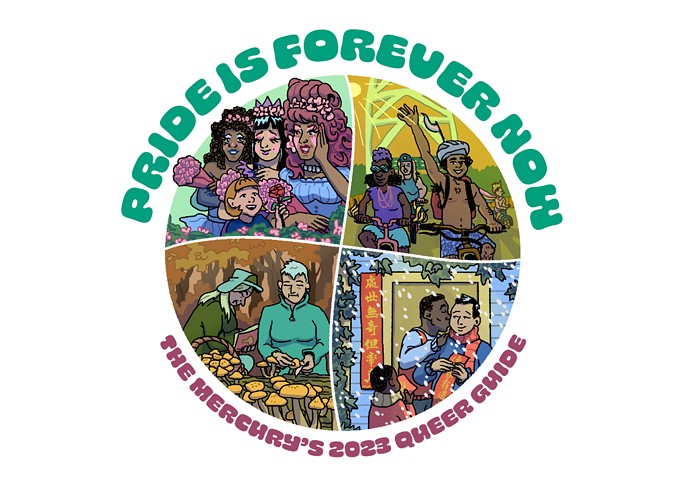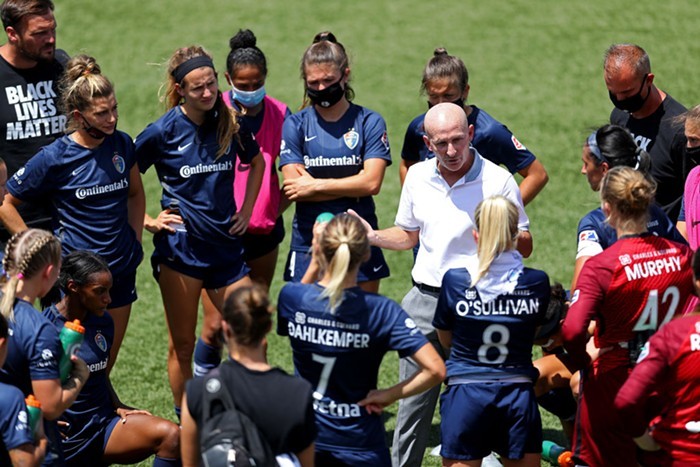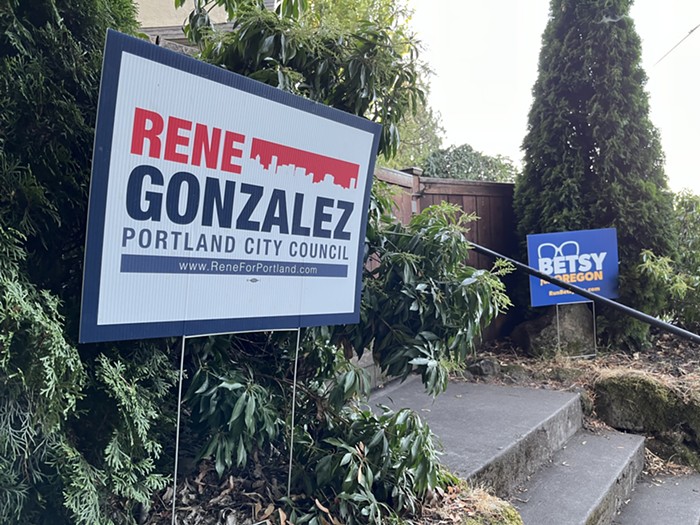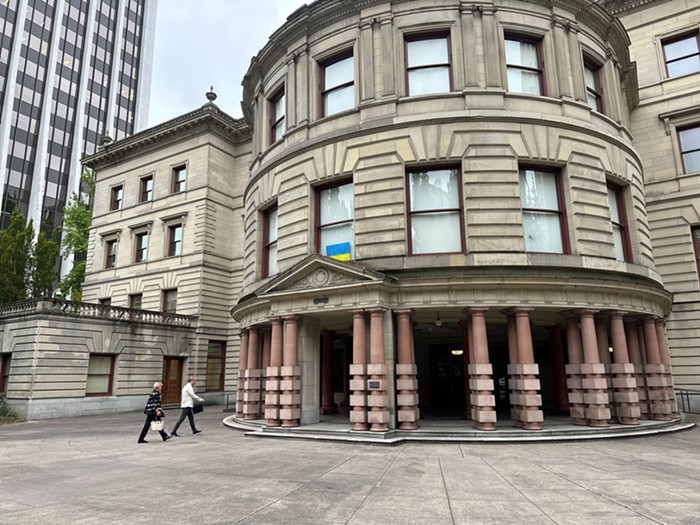Though the formal concerns of Storm Tharp's last solo shot at PDX, We Appeal to Heaven, remain front and center in his new body of work, ARM & ARM, the artist has injected his signature figuration with a more focused conceptual flair. As before, Tharp's portraits of figures real and imagined are executed in ink and gouache, a combination of confident, sweeping gesture and painstaking surface work. But here, his work willfully occupies a slippery division between the real and the represented. For example, Tharp's installation of an armoire sits in the center of the gallery, its doors splayed to reveal an ostentatious wardrobe. The installation invites viewers to read it as a kind of airing of autobiography—the clichéd skeletons in the closet. But as one recognizes some of the costumes from the artist's oeuvre and the billowing train of a dress concludes in a bowl of ink on the floor, Tharp redirects the viewer back to the art itself.
This playful condensation of the personal and the mediated hovers over the rest of the show. In "Diane Keaton as My Mother (in the Movie)," the artist presents six sketches of the iconic actress, ostensibly shot through with a confused maternal longing. "Sissy & Shelley," two monochromatic panels, further mines '70s American cinema for signifiers of scrambled identity. With a nod to Robert Altman's hallucinatory 3 Women, Tharp conjures actresses Spacek and Duvall, respectively, whose characters essentially exchange identities over the course of the film. Illustrated by a pair of nearly identical panels, the characters' relationship becomes a metaphor for the artistic act. Just as Spacek's naïve envy of the hapless but socially advanced Duvall results in the usurpation of her identity, the artist similarly realizes—even becomes—the artifacts of an unimagined reality.
In the wall-length mural, The Dog & Its Tail, Tharp riffs on the fine lines—whether semantic or socially coded—that distinguish similar entities. Conjuring Bruce Nauman's neon sculptures, he presents pairs of words and phrases, from anagrams ("SHIT/HITS") to more philosophical juxtapositions ("REFINEMENT" and "CORRUPTION"). By highlighting the underlying similarities between perceived opposites, Tharp asks viewers to reconsider not only the limitations of a one-dimensional interpretation, but also how well they truly know themselves.













